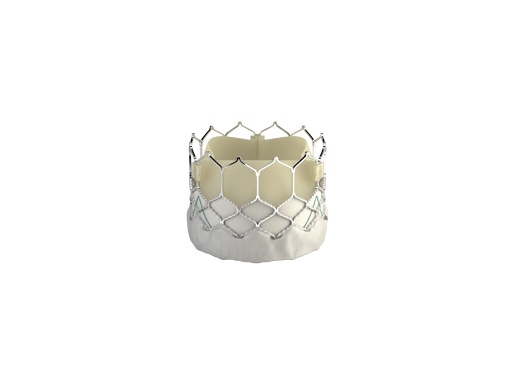FDA has just granted an expanded indication to intermediate-risk patients for Edwards Lifesciences' Sapien 3 transcatheter aortic valve. Here's what that might mean for the field of TAVR therapy.
August 18, 2016

FDA has approved the Sapien 3 transcatheter aortic valve for use in aortic stenosis patients deemed to be at "intermediate risk" for open surgery, Edwards Lifesciences announced Thursday. Sapien 3 is the first transcatheter aortic valve in the United States to earn the intermediate-risk indication.
The approval was based on data from the PARTNER II trial and as MD+DI previously reported, Sapien 3 valve has shown impressive clinical results. "The clinical outcomes of 1.1 percent mortality and 1.0 percent disabling stroke at 30 days in this intermediate-risk population treated with the Sapien 3 valve are changing the paradigm of how we treat patients with aortic stenosis," said Vinod Thourani, MD, in the press release, citing results from the study. Thourani is codirector of Emory Heart and Vascular Center's Structural Heart and Valve Center, professor of cardiothoracic surgery at Emory University School of Medicine, and a coprincipal investigator of the trial.
Learn more about TMVR and TAVR by attending the "Structural Heart Opportunities and Challenges" track at the MD&M Minneapolis Conference, September 21-22. |
FDA approved Sapien 3 for use in high-risk patient back in June 2015. The determination of whether an aortic stenosis patient is high-risk, intermediate-risk, or low-risk is made by hospital heart teams. An intermediate-risk patient is thought to have a surgical mortality risk of 3% or higher at 30 days.
That determination of a patient's risk can be subjective and may be evolving as transcatheter aortic valve replacement (TAVR) therapy becomes more widespread.
Mike Mussallem, chairman and CEO of Edwards, said on the company recent second quarter earnings call, "I think what you're seeing right now is just a different view of patients. They look at somebody today and say, well, I consider them high risk for surgery, knowing the kind of results that they get with transcatheter heart valves." He added, "I believe they're largely staying on indication . . . but we just have less precise estimates of what high risk, intermediate risk and low risk means compared to what we've had in the past," according to a Seeking Alpha transcript of the call.
Accordingly, there is some debate and uncertainty about the exact size of the intermediate-risk patient population, but it is thought to be significantly larger than the extreme/high-risk population. In an August 18 research note, Stifel analyst Rick Wise wrote, "We note that most key opinion leading clinicians and medical meeting presentations suggest intermediate risk patients--by score only--should represent ~2.0x the market opportunity of currently approved High/Extreme-risk patients. Assuming some of these intermediate-risk defined patients are already being implanted with TAVR, we estimate this intermediate incremental patient opportunity will largely drive the US market from $1.5B today to $2.1B in 2020."
How quickly will these intermediate-risk patients start being implanted? Mussallem told analysts on the earnings call that "we tend to think that we'll see more of a ramp, if you will, a gradual ramp, rather than a step function when that approval takes place." This FDA approval was also already included in Edwards' estimate of a worldwide TAVR market size that exceeds $5 billion in 2021 .
Edwards has also applied for CE Mark of an intermediate-risk expansion for Sapien 3. That is potentially anticipated around the beginning of 2017. Competitor Medtronic received CE Mark for its CoreValve Evolut R TAVR in intermediate-risk patients earlier this month.
Edwards is also enrolling a U.S. trial to study TAVR in a low-risk patient population.
[Image courtesy of EDWARDS LIFESCIENCES]
About the Author(s)
You May Also Like


